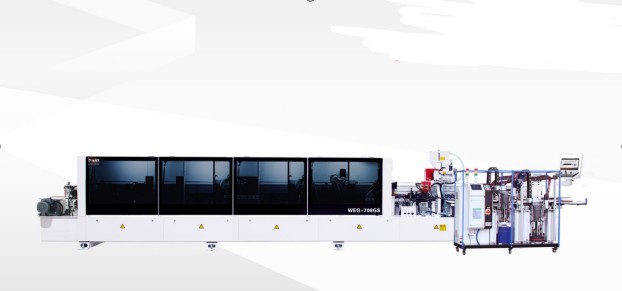To make woodworking more accessible, we have written this article so that we can help you understand more about edge banding. This article is intended as a complete guide to answering your questions about what edge banding is, the uses, benefits, and limitations of this equipment, and more.

What is edge banding?
edge banding generally refers to applying thin strips of wood to the raw edges of furniture. The strips are measured and can be cut to the correct size to fit perfectly with the wood panels. The edge banding will act as a protective layer that will prevent warping caused by moisture and air humidity, thus increasing the strength and durability of the product. The purpose of this side machine is to match the sides of the plywood to the finished cabinet or furniture so that a seamless finish can be achieved.
What is the use of edge banding in woodworking?
Many furniture manufacturers have this question - what use can edge banding serve in woodworking? To answer this question, we write about the benefits of using edge banding machines in furniture manufacturing.
While furniture with a chipped side will undoubtedly leave a wrong impression, automatic edge sealer strengthens the sides of the wood and protects the seal from daily wear and tear. It protects the sides of furniture from scratches caused by the constant use of cabinets or tables.
Another benefit of edge banding is that it completes the design of the furniture and makes the home more aesthetically pleasing. When the edge banding matches the wood panels in terms of grain and color, it can enhance the value and appeal of the furniture.
edge banding seals the edges of the original home panels to provide a moisture barrier to protect them from air humidity, which significantly enhances the durability of wood homes.
Over time woodworking homes are prone to wear and tear or damage, and edge banding can be easily replaced, giving you the advantage of remodeling your furniture. This method is much less expensive than solid wood edging, which also involves the additional cost of staining or varnishing.
Different materials used for edging
Various materials such as PVC, wood veneer, and acrylic can be used for edging. It is essential to use the correct strip for the wood when processing to ensure the longevity and strength of the product.
Because PVC strips can be easily replicated, they blend accurately with modern furnitures precise tones and finishes. They are impermeable and flexible, making them suitable for curved wood surfaces.
Veneer edge banding is generally made from pre-sanded slices of solid wood that are laminated together into rolls. It is less expensive than PVC edge banding and provides a natural finish in painted and stained operations.
Acrylic resin is heat resistant and durable, making it suitable for banding heavy wood floors and kitchen countertops. Other materials used for edging are ABS and polypropylene. PP edging can be used in extreme heat conditions, making it an excellent choice for edging in hot areas. ABS is a versatile thermoplastic, so its properties can withstand cleaning agents and are often used in kitchens.
edge banding process - how do you glue the edge banding?
Different methods of applying edge banding include manual ironing, edge banding tape, laser edge banding, and thermal laser.
In woodworking furniture processing and manufacturing, machines and equipment with thermal applicators and adhesives are generally designed to automate the production of high-quality furniture. A strip of edge banding tape is supplied through the edge banding machine, which is then placed on the wood panel. Heated rollers and a heat gun help activate the glue simultaneously, while the pressure rollers force achieves a continuous smooth surface finish.
During this process, clips hold the edge banding to the board to hold it securely. After the blade cuts off the excess strip from the side, a second roller applies more heat to melt the remaining adhesive. The boards are polished before the finished panel is ready.
Different types of edge-banding adhesives
The standard adhesives used in edge banding machines are PVA (Poly Vinyl Acetate) and PA (Polyamide), the most common edge banding adhesives on the market today. These hot melt adhesives work very well at high temperatures and are equally challenging and durable even at low temperatures. Their waterproof properties allow the edge banding tape to perform amazingly well.
What is the ideal thickness of edge banding tape?
edge banding boards are generally available in various thicknesses, depending on the furniture and the application. Generally speaking, 0.5 mm edge banding is used for cabinets, while 1 mm edge banding is used for kitchen and bathroom cabinets. If durability is desired, 3 mm edge banding will ensure the durability of the furniture.
Conclusion
This guide will help you find answers about the advantages of edge banding in automated commercial furniture manufacturing. Please note that the best edge banding depends on the type of material used in furniture and the equipment used, so it is also essential to choose good edge banding machine equipment. Knowing this information allows you to choose from a wide range of pre-bonded, wood, and acrylic edge banding.
If you choose a suitable material and a good edge banding machine, the product will be durable and high-quality for the customer. Different types of edge banding machines have different features and benefits. It is essential to confirm your budget and needs before purchasing, as well as choosing a reliable edge banding machine manufacturer.
Nanxing group is a professional edge banding machine manufacturer that provides furniture and woodworking machinery with world-class production conditions. Welcome to inquire about woodworking equipment!
